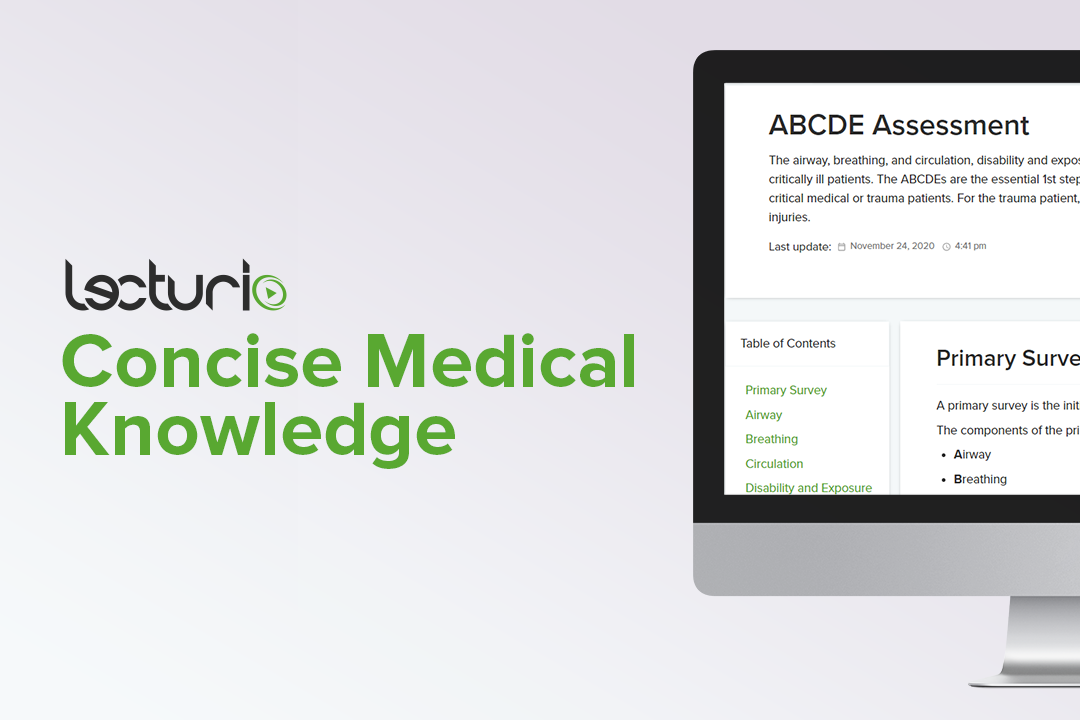Playlist
Show Playlist
Hide Playlist
Circulation: Primary Survey
-
Emergency Medicine Abdominal Injuries and Hemorrhagic Shock.pdf
-
Download Lecture Overview
00:01 Hello. Now we're gonna talk about circulatory life threats in major trauma, in particular, hemorrhagic shock. 00:08 So, when we think about circulation in the primary survey, we wanna get an overall look at our patient including their color, their level of consciousness. 00:18 We wanna see if they're pale or if they're pink, if they're alert or if they're obtunded; these can be signs as to their overall perfusion. 00:26 You can also take a look at capillary refill and of course you wanna know any external bleeding so that you can get that under control during your primary survey. 00:35 Another really useful thing during the primary survey is to feel the peripheral pulse strength. 00:40 So if your patient has good palpable dorsalis pedis pulses that tells you that their systolic pressure is at least 90 and that’s a very good sign for their overall perfusion. 00:51 As you move more proximally, a presence of a radial pulse tells you the systolic is at least 80, femoral 70, and carotid you don’t lose until the systolic drops below 60. 01:02 So, palpation of peripheral pulses can give you a very quick sense of the adequacy of your patient’s perfusion. 01:08 And, of course, we wanna look at the monitor because the bottom line on our circulatory assessment is knowledge of the circulatory vital signs in particular the heart rate and the blood pressure. 01:19 So, what kinds of pathology are we looking for when we assess C? Well, like I said at the beginning, most commonly, we're looking for hemorrhagic shock. 01:28 Bleeding is by far the most common cause of death in trauma and it’s one of the most common etiologies of shock that you'll gonna see in the trauma setting. 01:37 However, patients with tension pneumothorax can also present with shock as come patients with cardiac tamponade. 01:44 So we wanna look for all three of these life threats and address them if we find them. 01:48 All of these injuries require immediate specific treatment, so we need to diagnose them during the primary survey and we need to stabilize the patient during the primary survey in order to prevent them from dying.
About the Lecture
The lecture Circulation: Primary Survey by Julianna Jung, MD, FACEP is from the course Trauma (Emergency Medicine).
Included Quiz Questions
Peripheral pulses can be used to assess the adequacy of a patient's circulation. Which among the peripheral pulses will be the last to be diminished when a patient becomes hypotensive?
- Carotid pulse
- Radial pulse
- Femoral pulse
- Popliteal pulse
- Dorsalis pedis pulse
What is the most common cause of mortality in trauma?
- Hemorrhagic shock
- Cardiac tamponade
- Tension pneumothorax
- Myocardial ischemia
- Hemothorax
Customer reviews
5,0 of 5 stars
| 5 Stars |
|
5 |
| 4 Stars |
|
0 |
| 3 Stars |
|
0 |
| 2 Stars |
|
0 |
| 1 Star |
|
0 |




